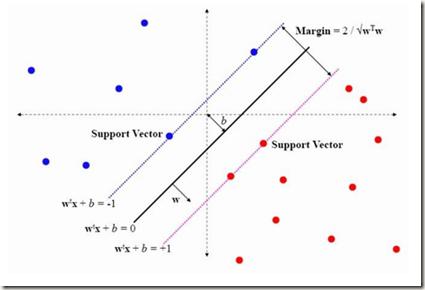We use automatic speech recognition to assess spoken English learner pronunciation based on the authentic intelligibility of the learners' spoken responses determined from support vector machine (SVM) classifier or deep learning neural network model predictions of transcription correctness. Using numeric features produced by PocketSphinx alignment mode and many recognition passes searching for the substitution and deletion of each expected phoneme and insertion of unexpected phonemes in sequence, the SVM models achieve 82 percent agreement with the accuracy of Amazon Mechanical Turk crowdworker transcriptions, up from 75 percent reported by multiple independent researchers. Using such features with SVM classifier probability prediction models can help computer-aided pronunciation teaching (CAPT) systems provide intelligibility remediation.
相關內容
Language is central to human intelligence. We review recent breakthroughs in machine language processing and consider what remains to be achieved. Recent approaches rely on domain general principles of learning and representation captured in artificial neural networks. Most current models, however, focus too closely on language itself. In humans, language is part of a larger system for acquiring, representing, and communicating about objects and situations in the physical and social world, and future machine language models should emulate such a system. We describe existing machine models linking language to concrete situations, and point toward extensions to address more abstract cases. Human language processing exploits complementary learning systems, including a deep neural network-like learning system that learns gradually as machine systems do, as well as a fast-learning system that supports learning new information quickly. Adding such a system to machine language models will be an important further step toward truly human-like language understanding.
To make deliberate progress towards more intelligent and more human-like artificial systems, we need to be following an appropriate feedback signal: we need to be able to define and evaluate intelligence in a way that enables comparisons between two systems, as well as comparisons with humans. Over the past hundred years, there has been an abundance of attempts to define and measure intelligence, across both the fields of psychology and AI. We summarize and critically assess these definitions and evaluation approaches, while making apparent the two historical conceptions of intelligence that have implicitly guided them. We note that in practice, the contemporary AI community still gravitates towards benchmarking intelligence by comparing the skill exhibited by AIs and humans at specific tasks such as board games and video games. We argue that solely measuring skill at any given task falls short of measuring intelligence, because skill is heavily modulated by prior knowledge and experience: unlimited priors or unlimited training data allow experimenters to "buy" arbitrary levels of skills for a system, in a way that masks the system's own generalization power. We then articulate a new formal definition of intelligence based on Algorithmic Information Theory, describing intelligence as skill-acquisition efficiency and highlighting the concepts of scope, generalization difficulty, priors, and experience. Using this definition, we propose a set of guidelines for what a general AI benchmark should look like. Finally, we present a benchmark closely following these guidelines, the Abstraction and Reasoning Corpus (ARC), built upon an explicit set of priors designed to be as close as possible to innate human priors. We argue that ARC can be used to measure a human-like form of general fluid intelligence and that it enables fair general intelligence comparisons between AI systems and humans.
Machine learning methods are powerful in distinguishing different phases of matter in an automated way and provide a new perspective on the study of physical phenomena. We train a Restricted Boltzmann Machine (RBM) on data constructed with spin configurations sampled from the Ising Hamiltonian at different values of temperature and external magnetic field using Monte Carlo methods. From the trained machine we obtain the flow of iterative reconstruction of spin state configurations to faithfully reproduce the observables of the physical system. We find that the flow of the trained RBM approaches the spin configurations of the maximal possible specific heat which resemble the near criticality region of the Ising model. In the special case of the vanishing magnetic field the trained RBM converges to the critical point of the Renormalization Group (RG) flow of the lattice model. Our results suggest an alternative explanation of how the machine identifies the physical phase transitions, by recognizing certain properties of the configuration like the maximization of the specific heat, instead of associating directly the recognition procedure with the RG flow and its fixed points. Then from the reconstructed data we deduce the critical exponent associated to the magnetization to find satisfactory agreement with the actual physical value. We assume no prior knowledge about the criticality of the system and its Hamiltonian.
Sequential neural networks models are powerful tools in a variety of Natural Language Processing (NLP) tasks. The sequential nature of these models raises the questions: to what extent can these models implicitly learn hierarchical structures typical to human language, and what kind of grammatical phenomena can they acquire? We focus on the task of agreement prediction in Basque, as a case study for a task that requires implicit understanding of sentence structure and the acquisition of a complex but consistent morphological system. Analyzing experimental results from two syntactic prediction tasks -- verb number prediction and suffix recovery -- we find that sequential models perform worse on agreement prediction in Basque than one might expect on the basis of a previous agreement prediction work in English. Tentative findings based on diagnostic classifiers suggest the network makes use of local heuristics as a proxy for the hierarchical structure of the sentence. We propose the Basque agreement prediction task as challenging benchmark for models that attempt to learn regularities in human language.
This work investigates the alignment problem in state-of-the-art multi-head attention models based on the transformer architecture. We demonstrate that alignment extraction in transformer models can be improved by augmenting an additional alignment head to the multi-head source-to-target attention component. This is used to compute sharper attention weights. We describe how to use the alignment head to achieve competitive performance. To study the effect of adding the alignment head, we simulate a dictionary-guided translation task, where the user wants to guide translation using pre-defined dictionary entries. Using the proposed approach, we achieve up to $3.8$ % BLEU improvement when using the dictionary, in comparison to $2.4$ % BLEU in the baseline case. We also propose alignment pruning to speed up decoding in alignment-based neural machine translation (ANMT), which speeds up translation by a factor of $1.8$ without loss in translation performance. We carry out experiments on the shared WMT 2016 English$\to$Romanian news task and the BOLT Chinese$\to$English discussion forum task.
The word order between source and target languages significantly influences the translation quality in machine translation. Preordering can effectively address this problem. Previous preordering methods require a manual feature design, making language dependent design costly. In this paper, we propose a preordering method with a recursive neural network that learns features from raw inputs. Experiments show that the proposed method achieves comparable gain in translation quality to the state-of-the-art method but without a manual feature design.
Standard machine translation systems process sentences in isolation and hence ignore extra-sentential information, even though extended context can both prevent mistakes in ambiguous cases and improve translation coherence. We introduce a context-aware neural machine translation model designed in such way that the flow of information from the extended context to the translation model can be controlled and analyzed. We experiment with an English-Russian subtitles dataset, and observe that much of what is captured by our model deals with improving pronoun translation. We measure correspondences between induced attention distributions and coreference relations and observe that the model implicitly captures anaphora. It is consistent with gains for sentences where pronouns need to be gendered in translation. Beside improvements in anaphoric cases, the model also improves in overall BLEU, both over its context-agnostic version (+0.7) and over simple concatenation of the context and source sentences (+0.6).
We present the first real-world application of methods for improving neural machine translation (NMT) with human reinforcement, based on explicit and implicit user feedback collected on the eBay e-commerce platform. Previous work has been confined to simulation experiments, whereas in this paper we work with real logged feedback for offline bandit learning of NMT parameters. We conduct a thorough analysis of the available explicit user judgments---five-star ratings of translation quality---and show that they are not reliable enough to yield significant improvements in bandit learning. In contrast, we successfully utilize implicit task-based feedback collected in a cross-lingual search task to improve task-specific and machine translation quality metrics.
One property that remains lacking in image captions generated by contemporary methods is discriminability: being able to tell two images apart given the caption for one of them. We propose a way to improve this aspect of caption generation. By incorporating into the captioning training objective a loss component directly related to ability (by a machine) to disambiguate image/caption matches, we obtain systems that produce much more discriminative caption, according to human evaluation. Remarkably, our approach leads to improvement in other aspects of generated captions, reflected by a battery of standard scores such as BLEU, SPICE etc. Our approach is modular and can be applied to a variety of model/loss combinations commonly proposed for image captioning.
Attention-based encoder-decoder architectures such as Listen, Attend, and Spell (LAS), subsume the acoustic, pronunciation and language model components of a traditional automatic speech recognition (ASR) system into a single neural network. In our previous work, we have shown that such architectures are comparable to state-of-the-art ASR systems on dictation tasks, but it was not clear if such architectures would be practical for more challenging tasks such as voice search. In this work, we explore a variety of structural and optimization improvements to our LAS model which significantly improve performance. On the structural side, we show that word piece models can be used instead of graphemes. We introduce a multi-head attention architecture, which offers improvements over the commonly-used single-head attention. On the optimization side, we explore techniques such as synchronous training, scheduled sampling, label smoothing, and minimum word error rate optimization, which are all shown to improve accuracy. We present results with a unidirectional LSTM encoder for streaming recognition. On a 12,500 hour voice search task, we find that the proposed changes improve the WER of the LAS system from 9.2% to 5.6%, while the best conventional system achieve 6.7% WER. We also test both models on a dictation dataset, and our model provide 4.1% WER while the conventional system provides 5% WER.





